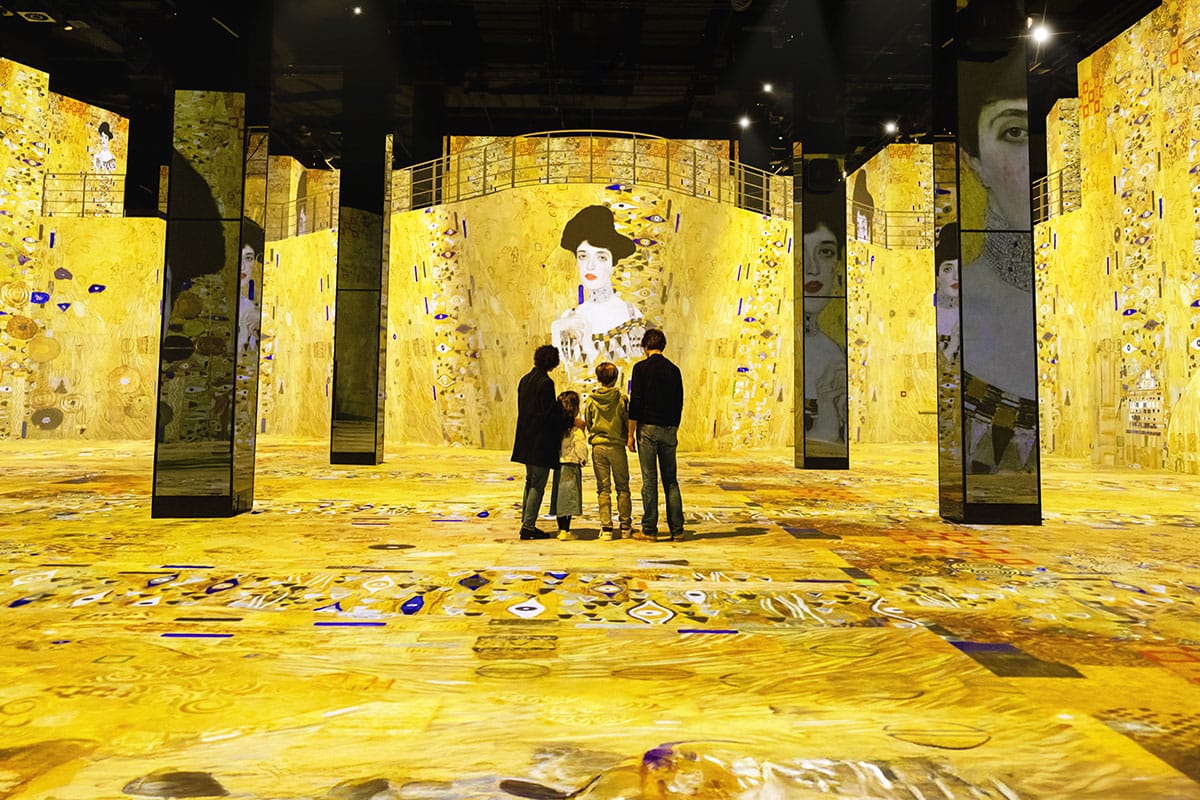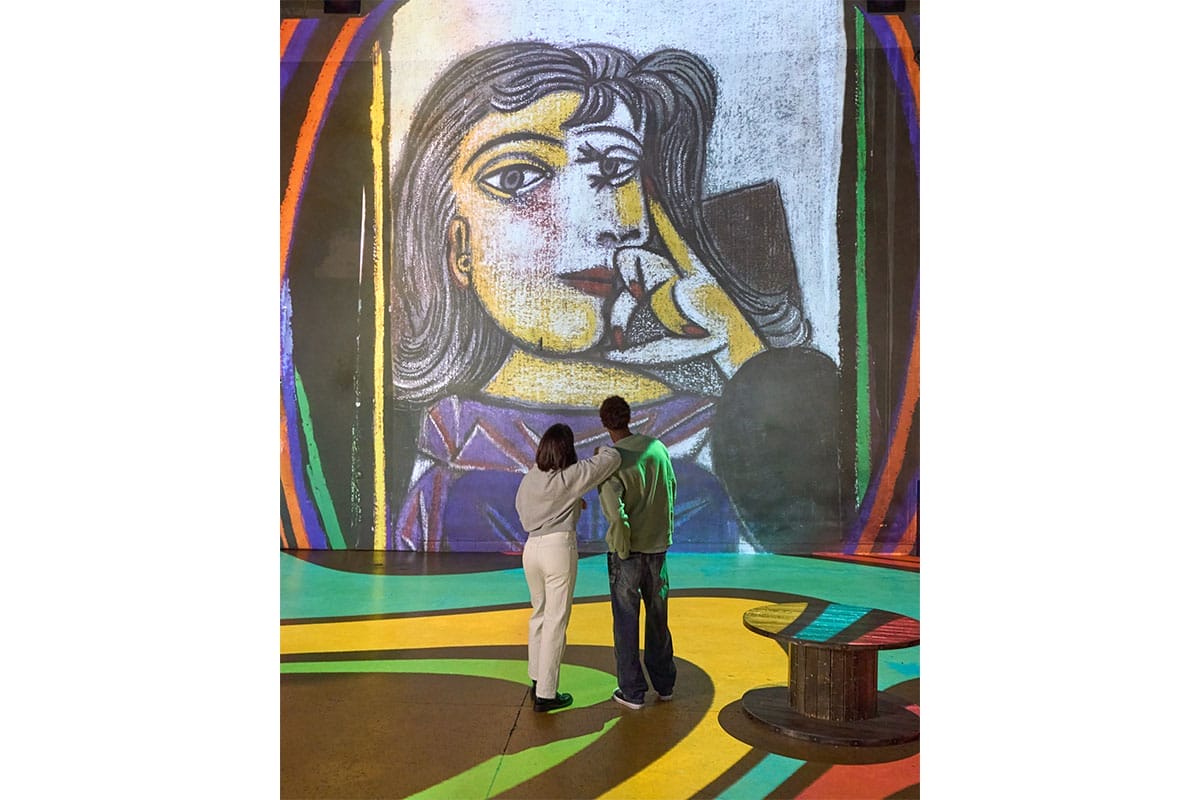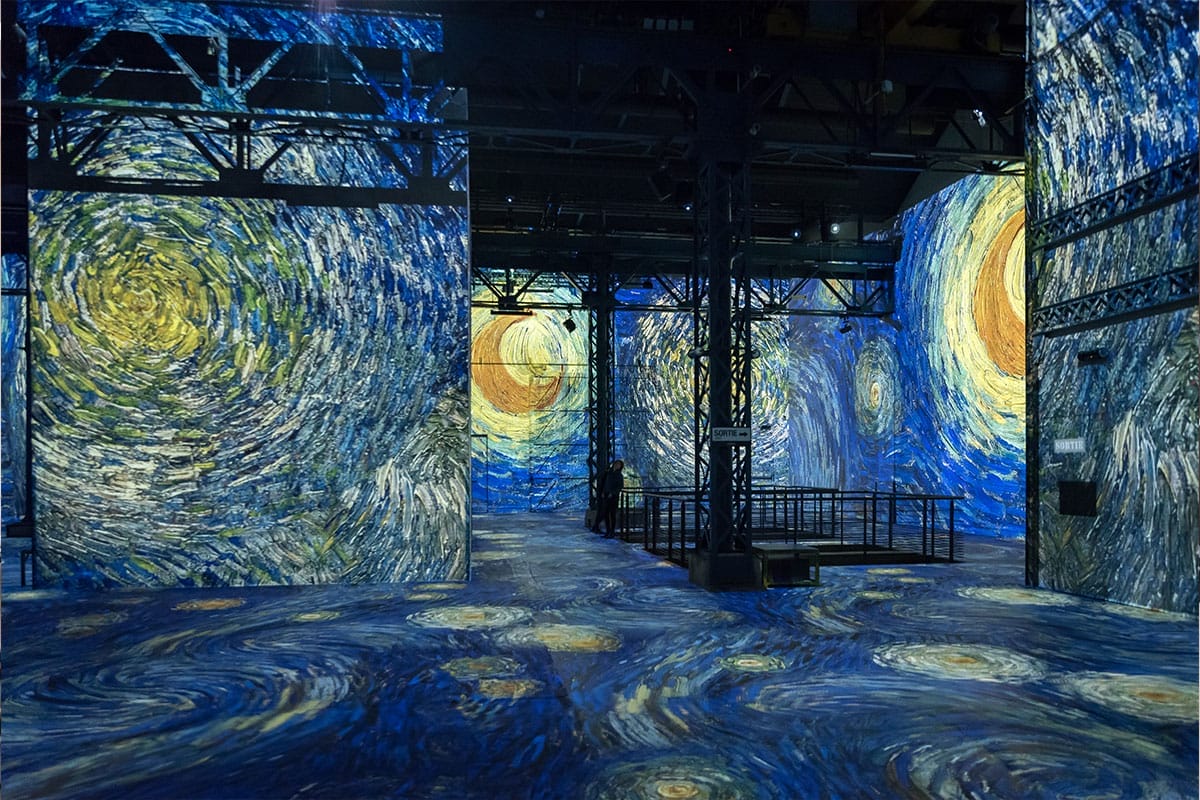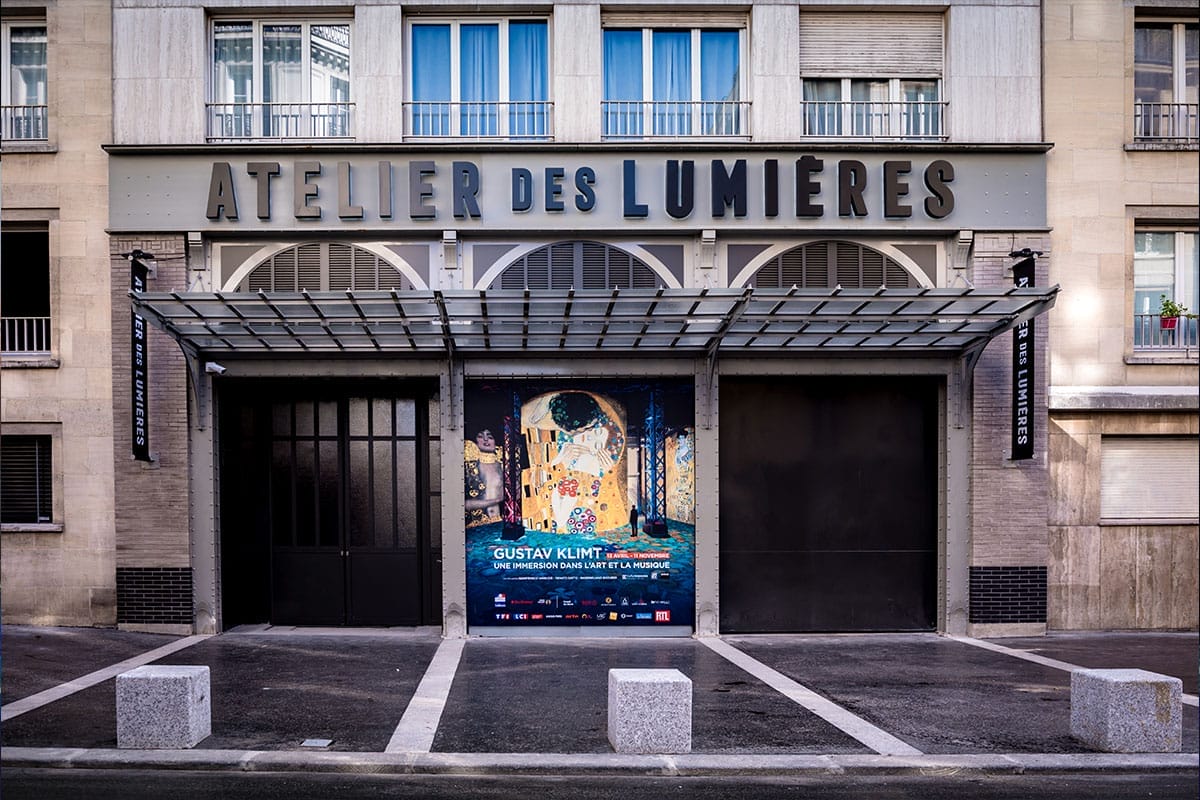The first engagement with Atelier Des Lumières in Paris, located in the 20th arrondissement near Cimetière du Père-Lachaise, doesn’t start with the art. It begins before you even step foot into the space. It meets you on the structural level. The grand industrial masterpiece—a beautiful foundry named The Chemin-Vert—is every bit of a visit as the other elements are. “We really think that we need to be in a special venue to truly create the experience we’re trying to achieve. The venue needs to have its own history and surprise the visitor,” says Grégoire Monnier, director of production for Culturespaces and son of the founder who created the organisation back in 1990. Still, entering through the large bay doors into the main space is a shock to the senses.

A moving tapestry of history’s most beautiful artworks, of flowing colours and lines, it is a pageantry of iconic masterpieces marching over the whole space. The roof is moving, the walls are liquified, and the floor spins as music fills up the space in aural dark matter. It is—literally—like nothing you’ve ever seen and geared to one end: to make you see art in a whole new, immersive, and fully modern way. In today’s visit, we’re viewing Picasso’s oeuvre and, as Guernica appears and pans across the whole space, a giant rendering of death and destruction, of screaming horses and faces in twisted, impossible contortions of horror, a slow, bellowing cello piece drives home the lament. Hundreds of people sit in slack-jawed awe, some lying on the floor, in rapt attention that would never happen in a conventional museum space. “We want to make it as immersive and as beautiful as possible, because we immediately saw the potential for this concept to be kind of a bridge for people to access, discover, and enjoy art,” Monnier explains.

That ambition is critical because traditional art spaces—museums and galleries—are in crisis at the moment. Since COVID-19, visitor numbers have been dropping dramatically as modern life becomes a hunt for a precious resource: attention span. The National Gallery in Britain remains 47 per cent down from its 2019 figures, and many other public world art institutions see reduced numbers. Culturespaces, however, has seen nearly a million visitors a year clamouring through its spaces. If packaged correctly, art can be considered a valuable way to spend one’s precious time.

So, what is Culturespaces getting so right that others, even the more endowed and famous museum spaces, can’t? According to Monnier, it’s all about the emotional connection. “We elicit a lot of emotions because we can animate a painting that, today, is not moving at all. We can add some music on top of it to create more connection,” he says. “So, this combination of images and music can make really beautiful, powerful emotions. This is something you will remember much more than only seeing a painting.”

That emotion is clearly resonating as Culturespaces has grown to a global brand, with spaces in France, Germany, The Netherlands, New York, and South Korea, as well as more planned. The success has also triggered competition as ‘baby immersives’ have sprung up in almost every country, mostly travelling experiences that do tours to places that typically don’t see international-level shows. “It’s a positive thing, because it means that we’ve democratised a new way to experience art,” Monnier says. “So, yes, it could be quite a big success everywhere in the world if the quality standards are good.”

What does the future hold for Culturespaces? The obvious answer would be to create more animations with artificial intelligence, possibly the use of more holographic technologies and the like. And though there is a technological team that is always thinking of innovations, maybe even some mixed or augmented reality, Monnier is more sanguine and making sure that any technology obeys the raison d’être of the organisation: creating an emotional connection to artists’ works.

“We want to tell a story. We always want to respect the work of the artist and, as we usually cannot speak directly with them, we need to be very respectful,” he says. “This is the ultimate goal: to make people just more, you know, into art.” By all accounts, as any visitor will tell you, Culturespaces venues like Atelier Des Lumières have lit up the art scene with a new, fresh approach to engaging the public.




